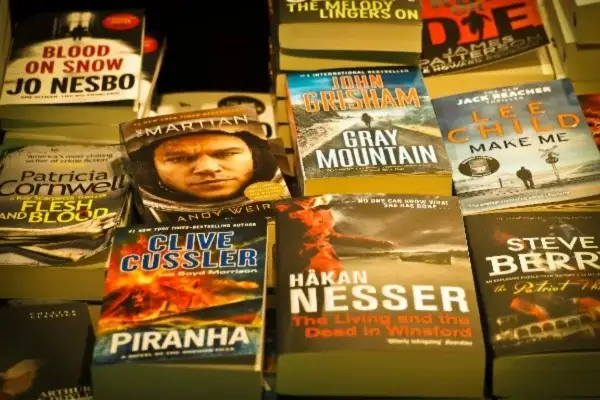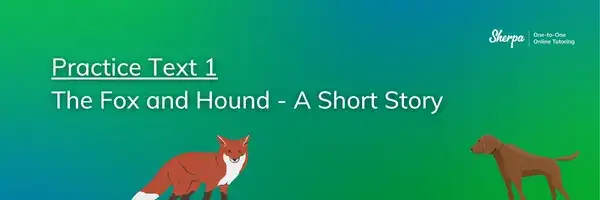GUEST POST
Do's and Don'ts for GCSE English Language Paper 1 Question 2

Sherpa has recently released a guide on how to answer Paper 1 of the GCSE English Language exam. Check out the guide here 👉 Ultimate GCSE English Language Paper 1 Exam Guide
10 Quick Tips for GCSE English Language Paper 1 Q2
😄 Excel with the use of technical vocabulary
Ensure you know the technical vocabulary and can use it correctly in your answer. For example; simile, metaphor, personification, semantic field, etc...
😄 Be careful with the quotations you use
Choose quotations that are packed with language analysis. A good quotation will usually contain more than one type of linguistic feature.
😄 Embed all quotations
Make sure all your quotations are properly introduced and embedded into your answer. This will show the examiner that you can control the material and will help you to gain those higher marks.
😄 Consider the effect on the reader in your comments
Make informed comments/answers by keeping the effect on the reader of similes, metaphors, etc... that have been chosen by the writer at the forefront.
😄 Explore singular words in depth
Explore the meaning of keywords in order to develop your answer further. Use the ZOOM technique.
😄 Have several interpretations for key phrases and words
When exploring the meaning of keywords and phrases, try to think of several interpretations. This will show the examiner that you are thinking deeply about the language being used and could argue 2 different viewpoints if asked.
😄 Use the term "lexical choice" instead of "word"
Use the term "lexical choice" when referring to a word or phrase that the writer has chosen. This will show the examiner that you are aware of the different levels on which language operates.
😄 Repeat keywords from the question when writing your answer
Make sure you use the same terminology as in the question in your answer. This will show the examiner that you are answering the question directly and not going off on a tangent.
😄 Identify 3 examples of words/phrases/techniques used for effect
When discussing the writer's use of language, identify and comment on 3 examples of words, phrases or techniques that are used for effect. This will show the examiner that you are able to identify and analyse a range of language features.
😄 Try to keep your answer under 4 paragraphs (3 preferred)
Although there is no strict limit on the number of paragraphs, try to keep your answer concise by focusing on the question directly.
Questions to ask yourself that will help you analyse the text for GCSE English Language Paper 1 Q2
- What is the effect of this word/phrase/metaphor?
- What is the writer encouraging me to think, feel and imagine?
- How is the writer doing this? What words & phrases, language techniques or sentence forms have they used?

Banned Phrases to Avoid in GCSE English Language Paper 1 Q2
These phrases aren't actually banned - you can write them but they do not show you are thinking critically...
- 😢 This puts an image in the reader’s mind…
- 😢 This makes the reader want to read on…
- 😢 This interests/engages the reader…
- 😢 This makes it flow…
How to Embed Quotations
Let's take a look at an example and work through how it can be embedded into an answer critically.
"Fear gripped the boy like an iron vice and he sprinted - he sprinted like a cheetah to escape"
Stem sentences to use after citing a quote for analysis
- This suggests, implies, connotes, indicates….
- From this, the reader can infer that…
- By using the word/phrase the writer creates a … atmosphere/tone.
- This gives the reader the sense that…
- Perhaps the writer is saying…
- Perhaps the writer wants the reader to realise that…
- This relates back to/foreshadows…
- This is similar to …
- Some people may read this as…
- Conversely, this could be interpreted to mean…
Structuring your response
Spot
Quote
Effect
Explain
Examples of how to explain it:
- An explanation of a plot point in relationship to the mood - the character feels this because of x and y.
- An explanation of the reader’s feelings and perspectives towards the character - the reader sympathises with/empathises with/connects with/ is frightened for.
- An explanation of the reader’s feelings towards the text - the reader trusts the writer/ the reader will expect X because this is an extract from a gothic novel/a dystopian novel.
- An explanation of a change of effect - the reader at first feels X but now they feel Y.
- An explanation of the writer’s purpose - the writer wants the reader to be …so that…
Example of Embedding Quote
The writer highlights the boy’s sheer terror to the reader when he writes: "Fear gripped the boy like an iron vice and he ran - he ran like a cheetah to escape." The personification of fear assists the reader in imagining that the boy was being pursued by a giant or some terrible monster trying to capture him by encircling him in powerful arms to hinder his escape. Furthermore, the dynamic verb "gripped" helps the reader to appreciate the sheer intensity and debilitating effect of the boy’s fear. This idea is further reinforced through the writer’s use of the simile "like an iron vice". Here the reader may be concerned that the boy’s fear is so acute that he may not be able to overcome it or escape it. Moreover, the repetition of the phrase "he sprinted" combined with the simile "like a cheetah" further intensifies the boy’s desperation and anxiety to escape increasing the tension for the reader.
Practice Makes Perfect - So it's Your Turn!
Apply what you have learned above to the following passages. Read the texts and answer Q2.

Practice Text 1
Stealthily, the fox moved into the field and looked furtively around. Although everything was quiet, his bright green eyes with their brilliant black pupils spanned around like searchlights. His tense body shivered, and he moved his reddish-grey nose imperceptibly as if he sensed the impending danger. Unexpectedly, the snarling of the hungry hounds cut through the eerie silence and the furtive fox ran swiftly for cover.
The leaden sky hung over the scene like a dark curtain about to fall. The howling crescendo of the hounds grew louder; the fox moved more rapidly. His heart was pounding. The uneven field, which had just recently been ploughed, hindered his characteristically agile movements. Gradually, the incessant howling of the enemy intensified to a terrifying crescendo and the fated fox could vividly sense the tangible excitement of his persecutors.
Suddenly, he was aware of excruciating pain in his back leg. Sharp teeth had cut the flesh. The lanced leg gave way underneath him significantly hindering his progress. Vehemently, the hounds, snarling eagerly, unleashed their killer instincts. The fox submitted to the greater might of the enemy. Everything in his world went dark. The battle was over: the curtain had fallen; darkness.
Slaughtered!
Now you have a go. How does the writer use language to describe the scene above?
You could include the writer’s choice of:
• Words and phrases
• Language features and techniques
• Sentence forms.

Practice Text 2
The fresh wind of the September morning tickled her face, and the boom of the foam-tipped waves was like an orchestra drumming in her ears. Smiling down on her, the friendly sun wrapped its warmth around her.
She looked up into the brilliant blue sky and noticed the swirling seagulls. Their incessant, high-pitched squawking punctuated the rhythmic sound of the waves. She had really missed this familiar seaside scene and it felt like an old friend giving her a comforting hug.
The wet pebbles under her feet glistened with their blues, greys, blacks and whites. Suddenly, she felt as if she were a child again, and remembered carefully collecting a selection of these stones in her bright yellow bucket.
Walking slowly on with the pebbles crunching beneath her feet, she tasted the salt of the seaside air on her dry lips. The now strengthening wind, coming in blasts, incessantly whipped her long dark hair around her face.
It was good to be home!
Ok, now it's your turn. How does the writer use language to describe the scene above?
You could include the writer’s choice of:
• Words and phrases
• Language features and techniques
• Sentence forms
Thanks for reading, I hope this helps! If you want to check your answers or contact me for more help, click my profile picture below and get in touch through my Sherpa profile. I hope to hear from you soon.
Students

Ruth D
Tutor
An enthusiastic English tutor with over 25 years experience
Looking for a tutor?
Sherpa has hundreds of qualified and experienced UK tutors who are ready to help you achieve your goals. Search through our tutors and arrange a free 20 minute introduction through our industry-leading online classroom.
Find a TutorSimilar Articles
Booker Taliaferro Washington the American educator
Booker Taliaferro Washington was an American educator, author, and adviser to multiple presidents of the United States.
Hridika
26th October

